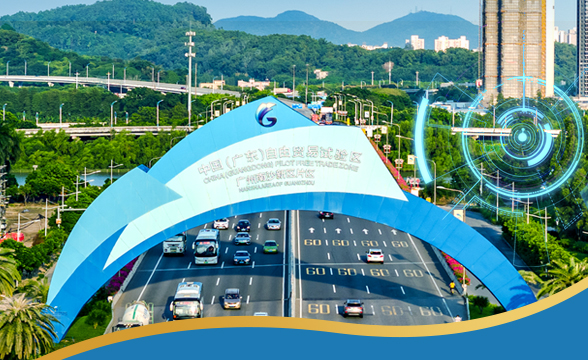How does‘AI plus Education’help schools?
Since 2017, it’s been common for teachers and students at the Guangzhou Nansha No 1 Middle School to use intelligent educational tools in class for data analysis as well as real-time interactions.
The teacher uses a tablet computer to ask questions of students in the classroom. The tablet instantly measures the accuracy of the students’ answers, so classroom feedback becomes more efficient.
After class, students can also interact with the teacher in real time through the tablet, so they will not miss any essential knowledge. Teachers are able to record “micro-lectures” and send them to the corresponding students’ tablets.
This is a microcosm of the “AI plus Education” trial in the city’s Nansha district. Artificial intelligence technology contributes greatly to targeted education for students, and accelerates the teachers’ development as well.
A big data teaching system powered by the iFLYTEK company has been established in Nansha, setting an example for the Guangdong-Hong Kong-Macao Greater Bay Area.
What is the biggest impact that smart education has had on traditional teaching? Perhaps it is in big data analysis. Students’ answers to each assignment and test paper, and their mastery of each topic, are recorded one-by-one to form a unique “picture”.
“Comprehensive understanding of the entire process of a student’s learning is something we wanted to do but couldn’t do before,” said Chen Hongfeng, a teacher from the school. “These data are especially valuable for teachers.”
The district has created a “tailored education” concept, as the desired outcome of smart education is still to educate people.
In Chen’s view, “tailored education” means meeting the differing individual needs of each student, and to explore suitable learning models based on their own abilities and characteristics.
Smart education creates opportunities for students to find their own path of growth.
The system also helps teachers reduce inefficiencies in their work by 40 or 50 percent. The resource library can automatically recommend high-quality teaching materials to complement the teacher’s teaching style and frequency of resource use, a faculty member called Li Zigen said.
Free from heavy physical labor, teachers have more time for teaching design and innovation, which will greatly improve the quality of their teaching, he added.
When a new round of teaching reform is underway, teachers must adapt to new educational development trends. Chen said that it is particularly important to free from conventional thinking, adding that leaving the comfort zone, rethinking and polishing their teaching processes and methods, the teachers will grow rapidly.
The school plans to form smart classroom teaching procedures that are implemented and replicable across various disciplines in the next one or two years, according to Chen.
All rights reserved. Presented by China Daily










